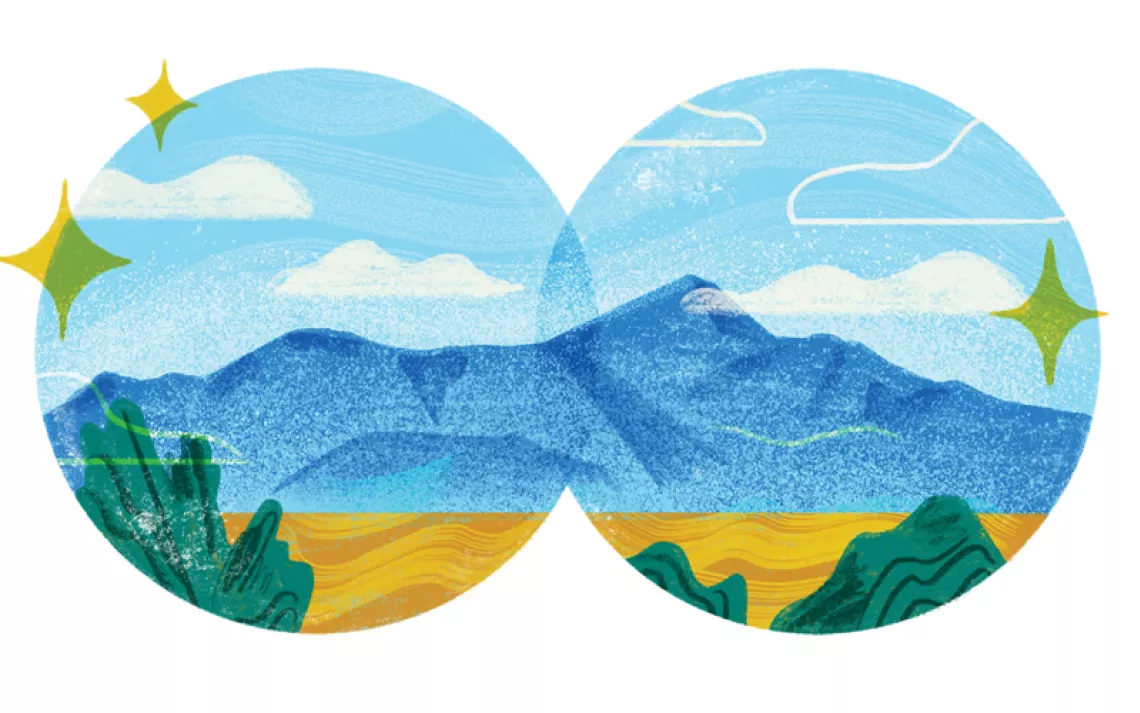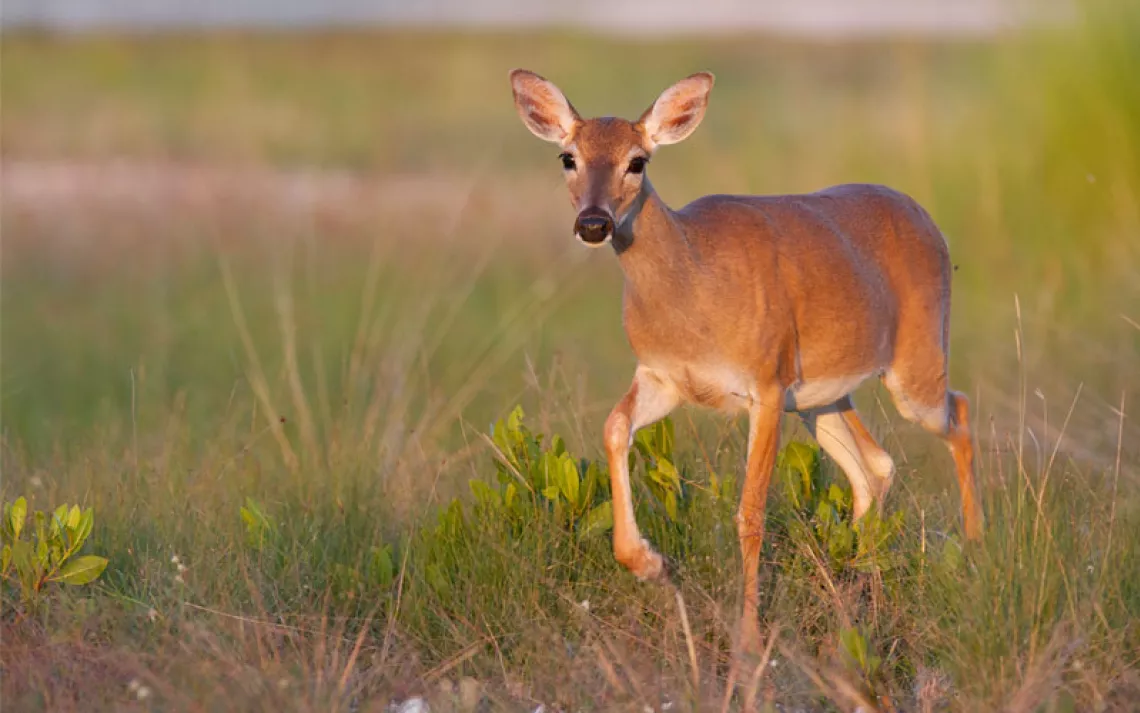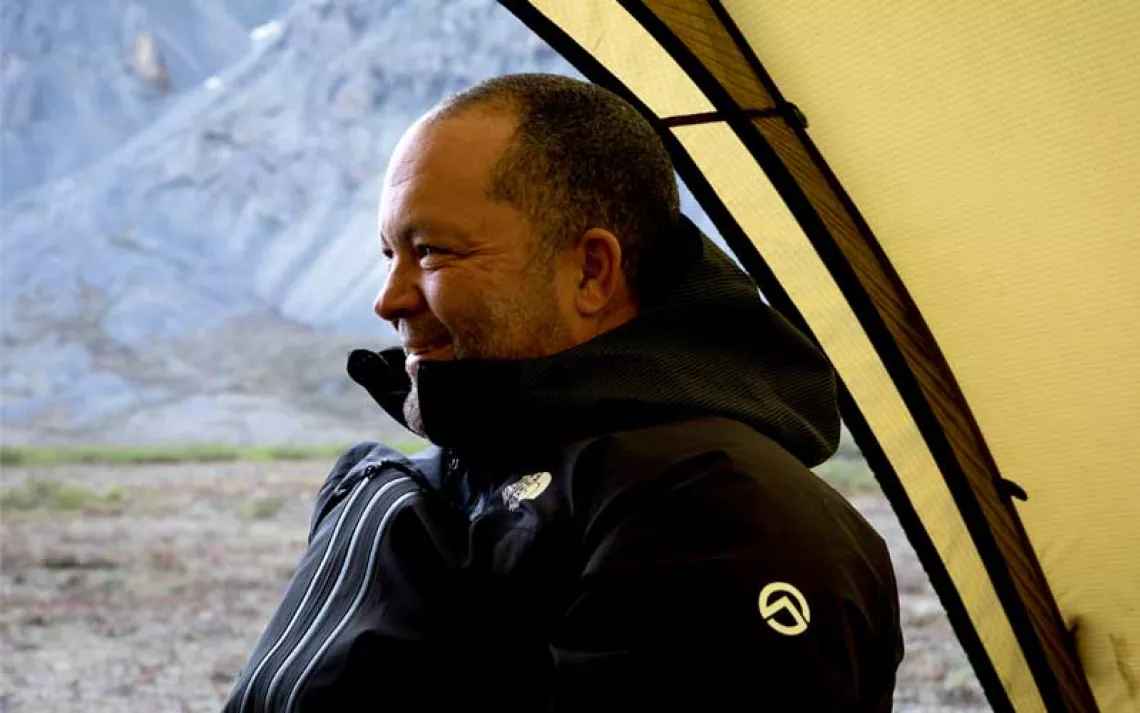Grizzly Bears Haven’t “Recovered,” So Don’t Start Shooting Them
Wyoming set to approve bear-hunting season; Yellowstone grizzlies remain isolated

Photo by moose henderson/iStock
Update: On Wednesday, May 23, the Wyoming Game and Fish Commission voted unanimously to allow grizzly bear hunting in the state. As many as 22 bears will be allowed to be killed in a wide area to the east and south of Yellowstone and Grand Teton National Parks. "This misguided proposal will set back 40 years of grizzly recovery efforts," the Sierra Club's Bonnie Rice said in a statement released after the vote.
On Wednesday, May 23, the Wyoming Fish and Game Commission will vote on whether to approve a grizzly-bear-hunting season in the state this coming fall. The meeting will take place in the town of Lander, a place that, in comparison to most human settlements in the United States, is pretty small. Lander is home to a scant 7,000 souls, in Wyoming, the least populated state in the country, with a mere 582,000 inhabitants.
Tiny as they are, those human population figures still dwarf the number of grizzlies in the Greater Yellowstone Ecosystem. There are an estimated 700 grizzlies in the greater Yellowstone region—fewer than one bear for every 100 people in Wyoming. Yet officials with the U.S. Fish and Wildlife Service and the state of Wyoming believe that the grizzly bear population is now sufficiently “recovered” to remove the animal from the endangered-species list—and to now consider a resumption of trophy hunting.
When Europeans arrived in North America, an estimated 50,000 grizzlies (Ursus arctos horribilis) roamed the continent. Their range stretched from present-day Mexico to Canada, and from the Great Plains to the shores of the Pacific Ocean, where they sometimes scavenged the carcasses of beached whales. As European settlers spread westward, a bloodbath ensued. By the 1970s, as few as 800 grizzlies remained in the Lower 48 (and less than 200 in the Yellowstone region), and they had been driven from roughly 98 percent of their historic range. In 1975, the bear was placed on the endangered-species list, and federal wildlife officials began investing significant time and money to boost its numbers.
By some measures, these efforts were successful. In addition to the 700-some grizzlies in the Greater Yellowstone Ecosystem, there are now about 1,100 brown bears inhabiting the Northern Continental Divide Ecosystem, centered around Glacier National Park and stretching into Canada. With these (somewhat) encouraging numbers in hand, the USFWS in 2016 released a plan for delisting the grizzlies. Many biologists, however, said it was too early. In a joint letter to federal officials, the American Society of Mammalogists and the Society of Conservation Biologists warned that the delisting was “premature.” The USFWS’s conclusion, the groups wrote, was “flawed by misrepresentation of population genetics literature and overly optimistic and unfounded predictions about the population’s resiliency.”
Despite such objections, the USFWS moved forward with delisting anyway. Why? According to some longtime bear-protection advocates, some within the agency and Interior Department officials wanted to show that the ESA could work to restore a large carnivore. That is, they needed to chalk up a “win,” even if it was a hollow victory. “They wanted to say that this was a success story,” says Bonnie Rice, the Sierra Club’s senior campaign representative in the greater Yellowstone region.
In short, the grizzly became a political football, and now Wyoming and Idaho are set to resume bear trophy hunting after a 40-year hiatus. Idaho is proposing to allow the killing of one bear this year; Wyoming game officials have floated a plan to permit trophy hunters to take up to 12 grizzlies in the fall. (Montana game officials have decided not to allow a bear-hunting season.) According to bear-hunting opponents, Wyoming engaged in some fuzzy math and increased its allowable bear take by rounding up its target bear numbers by “borrowing” huntable bears from Montana—poaching by bureaucracy, as it were.
If the hunting of 23 bears doesn’t seem like a big deal, consider this: In recent years, mortality rates for Greater Yellowstone grizzlies has crept upward. In 2017 alone, an estimated 11 percent of the grizzlies in what biologists call the “demographic monitoring area” of the Greater Yellowstone Ecosystem died. Some succumbed to natural causes, but the vast majority of the deaths were attributable to human causes, in many cases conflicts with ranchers as bears preyed upon livestock. At the same time, rising temperatures in the Rockies appear to be reducing the availability of some of the bears’ crucial food sources, like whitebark pine nuts and trout. Bear advocates also warn that any hunting of the large mammals is dangerous because they are so slow to breed: It took more than four decades, after all, for the bears to reach their current number of 700.
“If Wyoming allows the killing of females, there will repercussions to that, though we might not see the repercussions for a while,” says Andrea Santarsiere, an attorney with the Center for Biological Diversity. The center, along with the Sierra Club, other conservation organizations, and the Northern Cheyenne nation, have sued the federal government to stop the delisting. “We are not opposed to hunting generally, but we are opposed to trophy hunting, which is what this is.”
The American public appears to be largely in agreement. During the USFWS’s public comment period on grizzly delisting, some 850,000 people sent comments to the agency, the vast majority of them in opposition to removing the bears from the endangered-species list. And according to a March Economist/YouGov poll, 71 percent of U.S. adults say hunting animals for sport is “morally wrong.” Turns out that most Americans would rather see a bear in the wild than a bear stuffed and mounted.
All of which raises a larger question: Why is the state of Wyoming so gung ho to resume bear hunting? Longtime bear biologist David Mattson offers an explanation in a recent post to his website, the Grizzly Times. Mattson, who for years participated in the federal government’s Interagency Grizzly Bear Study Team, writes that “there is no science-based justification for hunting grizzly bears in Yellowstone or anywhere else.” The passion for bear killing, he argues, is the expression of a cultlike ethos of “death, violence, and domination . . . going back to the European settlement of North America.” To shoot bears for nothing more than fun is the “perpetuation of despotism,” in that it represents a human desire to dominate and control all other species—especially competitors like bears.
There is, of course, another way to manage our relations with grizzlies, and it can be boiled down to a single word—sharing. Somehow, we humans must find a way to spare lands from human development so that grizzlies can thrive and, at the same time, to share space with them. Real grizzly bear recovery is about far more than population figures. It is, above all, a matter of conserving and protecting habitat so that bears have the room they need to roam.
Here’s what lasting grizzly recovery would look like: Brown bears again living throughout the landscape in high enough densities so they can serve their ecosystem function of regulating the behavior of other species throughout the food web. Also, bears existing in interconnected populations so that they would avoid dangerous in-breeding. In the Rocky Mountains, that means connecting bears in the Greater Yellowstone Ecosystem with bears in the Northern Continental Divide Ecosystem, as well as helping bears to expand westward into the prime habitat of Idaho’s Selway-Bitterroot Wilderness. Real recovery would involve reintroducing grizzlies to the North Cascades of Washington State (an idea even Interior Secretary Ryan Zinke supports). Lasting recovery would mean going so far as reintroducing grizzlies to California, where the bruin graces the state flag, even though a grizzly hasn’t lived in the state for close to a century. In short, grizzly recovery means bringing the bears home.
We remain a long way from that goal. Until and unless we’re able to exercise the grace to share space with bears, it doesn’t make sense to kill them.
This article has been updated since publication.
 The Magazine of The Sierra Club
The Magazine of The Sierra Club



